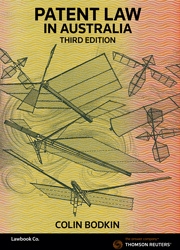Latest updates to Patent Law in Australia
Federal Court
ToolGen Inc v Fisher (No 2) [2023] FCA 794
ToolGen Inc v Fisher (No 2) [2023] FCA 794 affirms the established proposition that, for a claim to be entitled to priority from an earlier patent application, that application must contain a disclosure of the later-claimed invention which enables the addressee of the specification to obtain or carry out anything within the scope of the claim without placing an “undue burden” on the skilled addressee. It was held that in this case the claims were not enabled by the priority document, essentially because the priority document did not teach that a system as described in it, but derived from other bacterial species than the one identified specifically in the priority document, could reasonably be expected to show the useful property of the system disclosed in the priority document.
Vehicle Monitoring Systems Pty Ltd v SARB Management Group Pty Ltd (t/as Database Consultants Australia) (No 8) [2023] FCA 182
Vehicle Monitoring Systems Pty Ltd v SARB Management Group Pty Ltd (t/as Database Consultants Australia) (No 8) [2023] FCA 182 includes consideration of the circumstances in which authorisation of an infringing act may occur, in particular where the alleged authorisation occurred outside the limitation period set by Patents Act 1990 (Cth) s 120(4), but the infringing act took place within that period.
Commonwealth Scientific and Industrial Research Organisation v Urrbrae Foods Pty Ltd [2023] FCA 504
In Commonwealth Scientific and Industrial Research Organisation v Urrbrae Foods Pty Ltd [2023] FCA 504 it was held that “preliminary discovery” (so as to enable a potential applicant to decide whether or not to start infringement proceedings) is not limited to an order for the provision of documents but can include an order for any of the other actions that are set out in Federal Court Rules 2011 (Cth) rule 14.01.
Please click here for a more detailed summary of the latest release.

The Patent Law in Australia online service continues to be an indispensable guide to obtaining, maintaining, enforcing and challenging the validity of patents in Australia. Balancing both the practical nature of IP Australia processes and in-depth analysis of statute and case law, Patent Law in Australia navigates every aspect of the patenting process, with detailed commentary on the law pertaining to each stage and therefore provides relevant and effective advice for patent attorney's, intellectual property lawyers and barristers. The publication launched in 2008 and is published both as an online subscription service and as a book. The third edition of Patent Law in Australia was published in 2018.
